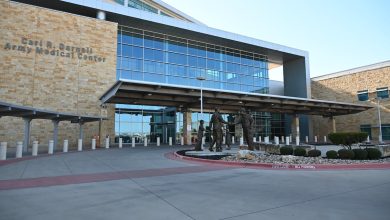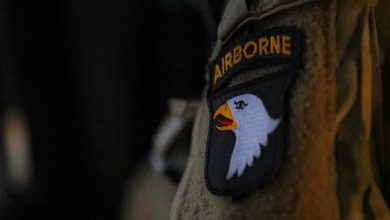US Air Force awards contract to prototype next-gen bunker-buster bomb
The U.S. Air Force last week awarded defense firm Applied Research Associates a two-year contract to design and prototype the next version of the massive bunker-busting bomb that this year struck a key Iranian nuclear facility.
ARA will work on the air-to-ground Next Generation Penetrator, the successor to the GBU-57 Massive Ordnance Penetrator, the Albuquerque, New Mexico-based company said in a statement Friday. Boeing, which originally made the MOP, is teaming up with ARA on the Next Generation Penetrator, the companies said. Boeing will design and develop the tail kit for the new bombs and support all-up round integration.
The Air Force Life Cycle Management Center’s Eglin Munitions Directorate awarded ARA the contract, the company said. After developing the prototype of the new bunker-buster bomb, ARA will produce and test both subscale and full-scale versions of the prototype.
“This effort will evaluate capabilities against hard and deeply buried targets that pose critical challenges to U.S. national security,” ARA said.
The value of the contract was not released.
Bunker-buster bombs like the MOP have become a key weapon in the military’s arsenal to damage or destroy hardened or deeply buried targets such as underground labs, tunnels, military facilities or protective shelters for key enemy personnel.
They were most recently used in the Air Force’s June strike on Iran’s nuclear enrichment plant at Fordo, which is buried deep in a mountain.
In a February 2024 request for information for the new munition, the Air Force said it wanted its prototype warhead design to not exceed 22,000 pounds, and be capable of blast, fragmentation and penetration effects.
This would be lighter than the current MOP, which is about 30,000 pounds.
The Air Force also wants the vendor to deliver about 10 subscale and three to five full-scale warheads between 18 months and two years from the contract award, according to the RFI. The weapon’s navigation system needs to be able to operate in an environment where the enemy has degraded or denied GPS capabilities.
Stephen Losey is the air warfare reporter for Defense News. He previously covered leadership and personnel issues at Air Force Times, and the Pentagon, special operations and air warfare at Military.com. He has traveled to the Middle East to cover U.S. Air Force operations.
Read the full article here









